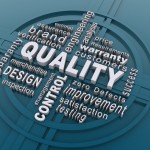
Did you know that typically 7 to 10% of pharma products sold are affected by counterfeiting? This means that approximately $1.5 to $1.7 trillion of the money made from the sale of medicines goes to illegal distributors.
Prescription and over-the-counter drugs recently came third in a list of the 10 most counterfeited products and, according to the World Health Organization, over half of drugs purchased online are counterfeited. All these figures may seem shocking but, according to experts in the subject, depending on certain brand’s demographics, geographies of sales, and the type of drug, they can be even larger.
There’s no doubt that the internet, with the anonymity that it provides, has become a very popular channel for the distribution of fake prescription drugs and active pharmaceutical ingredients (APIs). We cannot forget that the new technologies make it easier than ever for fraudsters to duplicate a company’s product or to alter serial numbers. This not only endangers the health and safety of the consumers, but it could also be a huge threat for the legitimate distributor:
- It harms the brand reputation of the legal pharmaceuticals. This is because the counterfeited drugs tend to be ineffective and of poor quality.
- The risk of legal lawsuits: unauthorized pharma goods can be, as we have already said, very harmful for the consumers. This could mean a lot of trouble for the pharmaceutical companies because of the company liability.
- The arrival of the new gTLDs can multiply the cases of Cybersquating. Fraudulent online pharmacies can view them as a great opportunity to buy similar domain names to the legal ones, driving loads of traffic to them.
- Loss of corporate profits. Also in relation with the previous point. According to research carried out by the World Health Organization, unauthorized drug distribution costs the pharmaceutical industry over $400 billion each year.
- Copyright and Trademark infringements. This not only harms the reputation of the brands but can also result in significant profit losses and undo years of branding efforts.
According to former FBI agent turned pharmaceutical brand protection consultant, Keith Cutri: “If a pharma company does nothing to mitigate risk, it is conceivable counterfeiters will pursue the slippery slope of being able to go replicate the API, the product, or even steal the formulation from overseas factories,” and “if that goes unmitigated, that problem will continue to rise for that brand because there is no incentive for counterfeiters to move on to another brand that ‘has an easier go at the product,’”
However, given all the threats that the pharma companies face, very few of them have some form of them have some form of internet monitoring in place that would allow them to detect trademark and copyright abuse, counterfeiting of their products, impersonation, and other kinds of online piracy. These companies should take proactive action against grey online pharmacies, not only in order to reclaim the profits lost but also to fight against the serious worldwide health risk represented by the consumption of illegal prescription drugs.
dotNice – experts in digital brand protection
www.dotnice.com
For more information email: brandprotection-emea@dotnice.com

